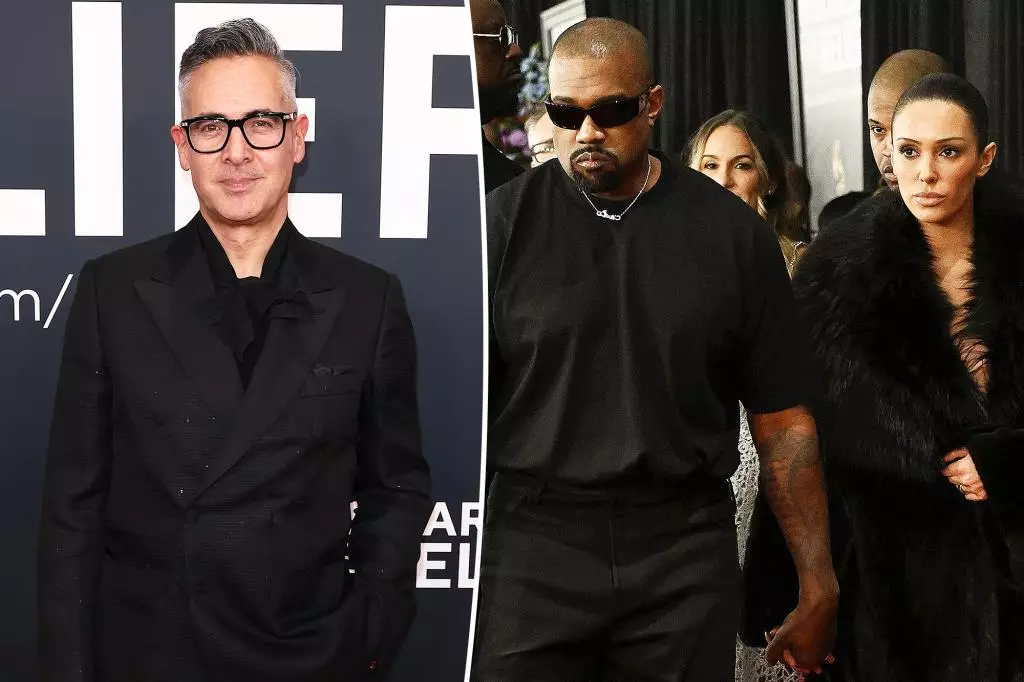The Grammy Awards have long been synonymous with music’s biggest night, showcasing not only phenomenal talent but also extravagant fashion. However, in 2025, the event found itself embroiled in a unique controversy, particularly revolving around the attire chosen by Kanye West and Bianca Censori. This incident highlighted the ongoing tension between personal expression and established dress codes in high-profile events.
Raj Kapoor, the executive producer of the 2025 Grammys, spoke candidly about the expectations set for attendees. According to Kapoor, an “artistic black-tie” dress code is anticipated, which seemingly leaves a significant degree of interpretation for those in the music industry. This vagueness in the dress code presents a double-edged sword; while it allows for individual creativity and expression, it simultaneously opens the door for attire that can be deemed inappropriate or disrespectful in the context of a prestigious event.
Kapoor acknowledged that different standards apply depending on a guest’s connection to the show. While performers are held to stringent adherence to the dress code, nominees and attendees may navigate these guidelines with varying degrees of freedom. This uneven application of standards raises questions about accountability and the consistent enforcement of the dress code.
Interestingly, although Kapoor provided insight into general expectations, the specifics of the Grammy wardrobe guidelines were not made explicit by the Recording Academy itself. In 2013, CBS outlined their expectations, including stipulations regarding adequate coverage of certain body parts. The document offered a clear directive against sheer or see-through clothing, underscoring the importance placed on maintaining a level of decorum appropriate for such a celebrated event.
Despite these established guidelines, Censori’s outfit—characterized mainly by its transparent nature—served as a stark contradiction. This stark fashion choice ignited discussions about the purpose of red carpet events, where personal statements often clash with formal expectations.
Bianca Censori’s appearance at the Grammys made headlines for its boldness. The former Yeezy architect donned a near-completely transparent minidress that resembled sheer stockings, boldly eschewing traditional undergarments. Initially covered by a luxurious black fur coat, Censori ultimately revealed her outfit after purportedly receiving encouragement from West to attract attention.
This theatrical moment encapsulates a broader trend in celebrity culture, where gaining visibility—regardless of the surrounding circumstances—can often overshadow the significance of the event itself. The couple allegedly aimed to mirror the provocative imagery of West’s “Vultures 1” album cover, showcasing a narrative about artistic expression. However, the line between creative representation and inappropriate exposure was challenged, igniting mixed reactions from both fans and critics alike.
Following their attention-grabbing appearance on the red carpet, West and Censori chose to skip the Grammy ceremony itself and instead headed to a private afterparty. This decision hinted at a deliberate move away from the traditional awards environment, emphasizing their preference for private celebration over the structured nature of the award show.
While some expressed concern over Censori’s scant attire, insiders within her circle claimed she thrives on the attention—whether it be negative or positive. This anarchy in perception underlines an important conversation about celebrity culture; the boundaries of public scrutiny and personal expression continue to be tested, suggesting that for many, notoriety—good or bad—transcends the immediate implications of their choices.
The controversy surrounding West and Censori’s attire at the 2025 Grammys epitomizes the ongoing debate regarding fashion standards within the entertainment industry. As the lines between personal branding and event expectations blur, it becomes critical for organizers, performers, and attendees to engage in a dialogue regarding societal standards and artistic freedom. Ultimately, this discourse could shape the evolving narrative of red carpet appearances and their significance moving forward, ensuring that while fashion retains its bold character, it also adheres to the integrity of the environments it seeks to celebrate.

